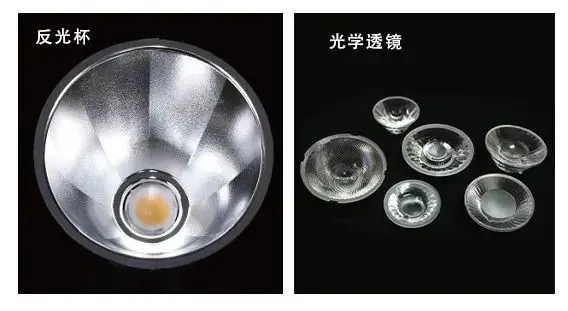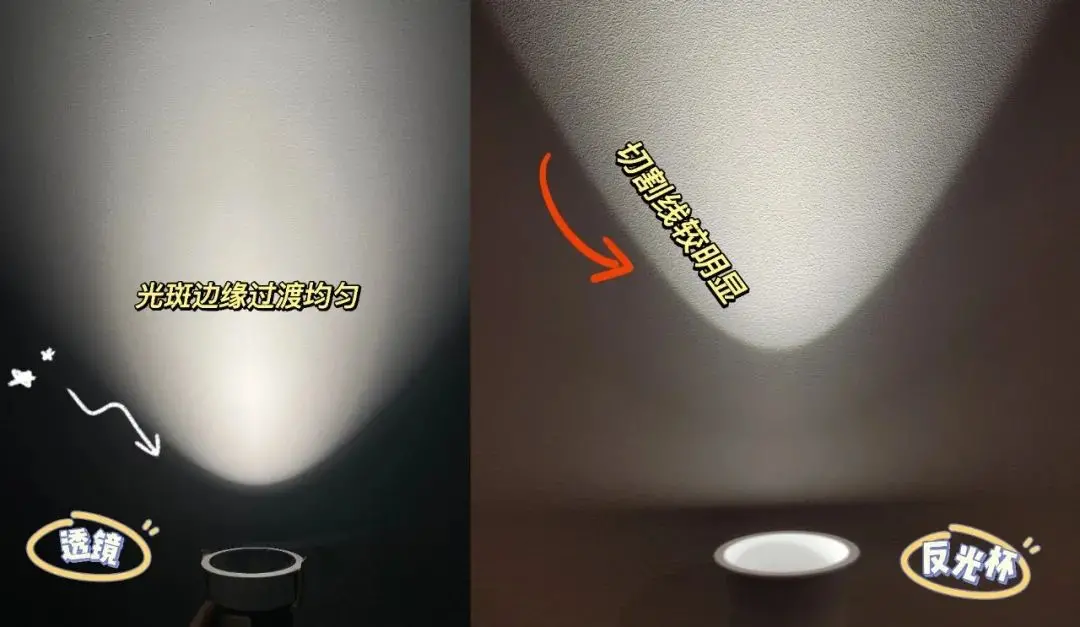2023-02-06
What is led lens and led reflector used for?
LED Lens and LED reflectors are secondary optical components, which are also the most common light distribution components in the LED era. If there is no such core light control component, we will see that there are fluorescent lamps everywhere, and the light scatters are disordered.

When the LED lens and LED reflector are not installed, the light spot is diffused around. If the lens and reflector are installed, the light will be concentrated as what we designed, and the reflecting angle is adjusted by the lens and reflector at the same time.
What's the difference between them?

LED Reflector
- LED reflector refers to use with a point light source, which needs to reflect light at a distance, usually made as a cup, which is commonly defined as a reflector.
- Controlling the light directly from the source, however, a large part of the light is not in contact with the reflective surface which means it is not under control, the secondary light spot is quite obvious, the light spot is determined by the LED reflector surface, with the same size and angle, due to the LED reflector light intercept angle is larger, the anti-glare will be much

LED Lens
- LED lens is an optical component made of a transparent substance (such as PC, PMMA, glass, crystal, etc.). A lens is a refractor whose body is transparent of two spheres (part of a sphere) or a sphere (part of a sphere) with a plane.
- About the material of PMMA, its plasticity is good, high transmittance (up to 93%), the disadvantage of it, is that the temperature resistance is relatively low compared with PC, only around 90 degrees. The secondary LED lens is usually a total internal reflection (TIR) design. The lens is designed to reflect the light go through the front of the lens, and the conical surface can collect all the side light. The overlap of these two rays creates perfect light utilization and a beautiful light spot effect. The efficiency of TIR lenses can be more than 90% and is mainly applied to small angle lamps (beam Angle <60°), such as spotlight and downlight.

- The effect of the light reflecting by the lens generally has no secondary light spots. The shape of the light spot is relatively more well-distributed, due to the TIR design being adopted. In the meantime, the light output efficiency is relatively high compared with the LED reflector.
Note: TIR refers to "Total Internal Reflection", also known as total reflection, which is an optical phenomenon.
Recommendation of our LED reflector

Good or bad depends on how you choose your design. As long as it can achieve the desired optical effect, it is a good optical component, I think, both of lens and reflector can be achieved without any doubt.

Final decision
Darko is not only to produce optical LED lenses, and LED reflector products, for your reference, our new series – the "lotus" series, which is a traditional German aluminum before the effect, that is, a reference to the German aluminum surface texture, and to do a reflector, please feel free to contact us to learn more.
